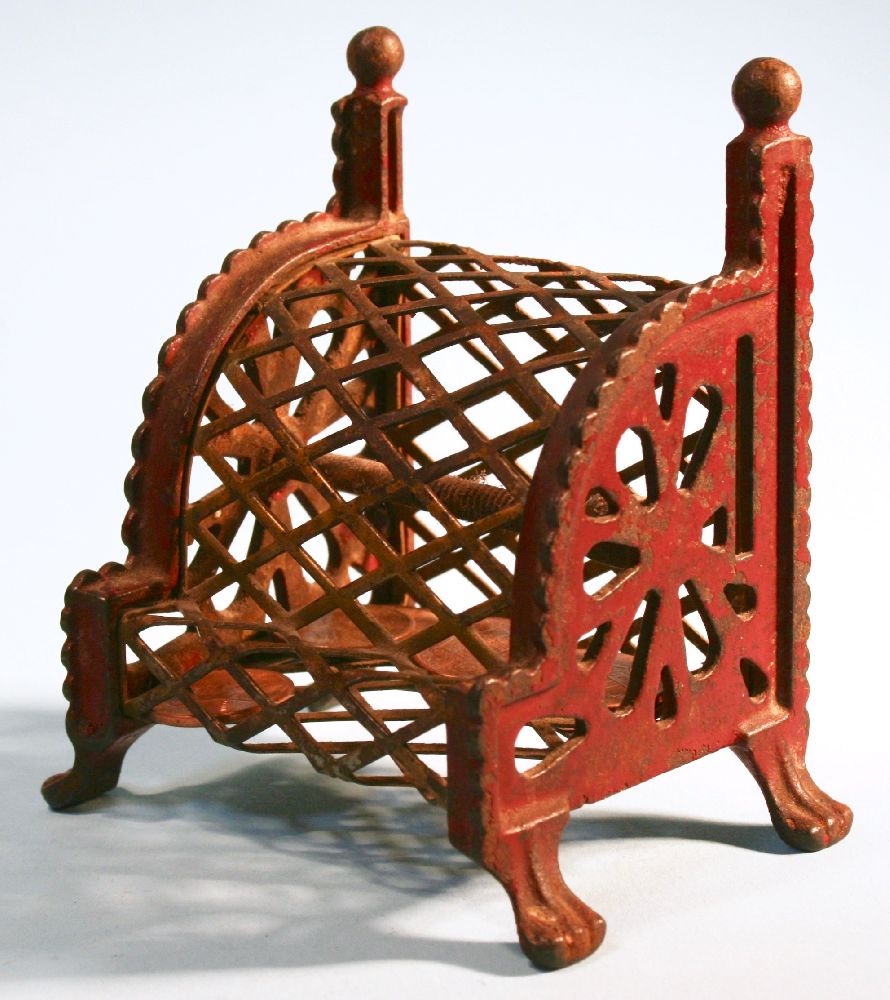

Title: Antique Red Cast Iron Cage Coin Penny Toy Bank
Shipping: $20.00
Artist: N/A
Period: Unassigned
History: N/A
Origin: N/A
Condition: Museum Quality
Item Date: 1900
Item ID: 6756
A wonderful cast-iron coin Bank. Cast Iron toy bank, Antique Penny Bank, Vintage Coin Bank, Box Bank, Architecture Toy coin cage toy box coin bank, Antique 1900s Decor, Old Cast Iron design. Piggy bank (sometimes penny bank or money box) is the traditional name of a coin accumulation and storage container; it is most often, but not exclusively, used by children. The piggy bank is known to collectors as a "still bank" as opposed to the "mechanical banks" popular in the early 20th century. These items are also often used by corporations for promotional purposes. People often saved money in kitchen pots and jars made of pygg, called "pygg jars". By the 18th century, the spelling of "pygg" had changed and the term "pygg jar" had evolved to "pig bank." Once the meaning had transferred from the substance to the shape, piggy banks began to be made from other substances, including iron, glass, plaster, and plastic. An alternative theory of the etymology of the Piggy Bank is that in ancient times, scraps of food, and food that would otherwise spoil, could be "saved" and/or "invested" (and to an extent "recycled") by being fed to the domestic pig and in doing so fattening the pig for subsequent eating or sale. As pigs eat such a variety of foods in so many conditions, the strategy paid off for peoples in all continents and the strategy was passed on from generation to generation. Then when money was introduced into society, the already firmly established cultural habit of saving food scraps by depositing them in the pig was then supplemented, and in more developed/urban societies was supplanted, by the saving of scraps of money rather than food in the piggy bank.
https://en.wikipedia.org/wiki/Mechanical_bank
Mechanical banks are small containers with a decorative mechanical action, used to store coins. They were originally intended to promote saving money among children in the mid-19th century. Frequently made of cast iron, mechanical banks were often creatively designed, depicting historical, legendary or everyday events to increase their appeal. Each bank performed a stunt or an action when a coin was dropped into a slot and a lever was pulled. The banks quickly became popular with children and adults alike and soon became a sought-after collector's item.